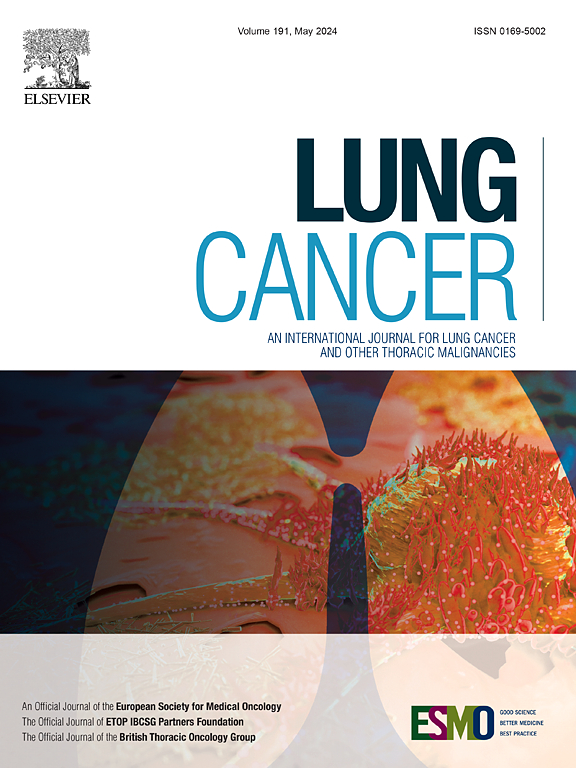Diagnostic and prognostic relevance of inflammatory markers in surgically treated thymic epithelial tumors: An international multicenter study
IF 4.5
2区 医学
Q1 ONCOLOGY
引用次数: 0
Abstract
Background
Complementary prognostic markers are needed in thymic epithelial tumors (TETs) to aid patient stratification and determine the most appropriate follow-up strategies. This study aimed to assess the diagnostic and prognostic relevance of blood-based inflammatory markers in a large cohort of surgically treated TET patients.
Material and Methods
A total of 743 TET patients who underwent surgical resection between 1999–2021 were included in this multicenter study. Inflammatory markers were recorded from the most recent preoperative blood cell count prior to surgery. Measured variables were rescaled and harmonized to obtain comparable values across the participating centers.
Results
Preoperative CRP was significantly higher in TET patients with increased tumor size (vs. those with T1 tumors, p = 0.035). Likewise, neutrophil-to-lymphocyte ratio (NLR) (p = 0.002) and platelet-to-lymphocyte ratio (PLR) (p < 0.001) were both significantly higher in thymic carcinomas than in thymomas. Notably, increased NLR and PLR were mainly attributed to significantly decreased lymphocyte levels in thymic carcinoma patients. Concerning survival outcomes, we found that elevated PLR and fibrinogen influenced overall survival (OS) (p = 0.002 and p = 0.018, respectively) and cause-specific survival (CSS) (p = 0.002 and p = 0.009, respectively) independently of other variables in our multivariate models, and they constituted negative prognosticators in TETs. Elevated CRP had an independent negative impact only on OS. Although elevated NLR was linked with impaired prognosis in our univariate model (p = 0.008), its independent prognostic significance could not be validated.
Conclusions
Using the so-far largest cohort of surgically treated TET patients, our study demonstrates that CRP, PLR, and NLR have diagnostic significance in TETs, while elevated PLR and fibrinogen constitute independent negative prognosticators for OS and CSS. Accordingly, the current multicenter study offers additional guidance in developing personalized surveillance protocols in thymoma and thymic carcinoma.
求助全文
约1分钟内获得全文
求助全文
来源期刊

Lung Cancer
医学-呼吸系统
CiteScore
9.40
自引率
3.80%
发文量
407
审稿时长
25 days
期刊介绍:
Lung Cancer is an international publication covering the clinical, translational and basic science of malignancies of the lung and chest region.Original research articles, early reports, review articles, editorials and correspondence covering the prevention, epidemiology and etiology, basic biology, pathology, clinical assessment, surgery, chemotherapy, radiotherapy, combined treatment modalities, other treatment modalities and outcomes of lung cancer are welcome.
 求助内容:
求助内容: 应助结果提醒方式:
应助结果提醒方式:


